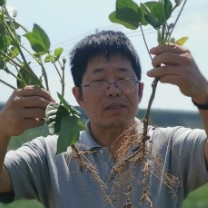Biochar-Based Fertilizers in Agriculture: Soil—Plant Interactions and Functions
A special issue of Plants (ISSN 2223-7747). This special issue belongs to the section "Plant–Soil Interactions".
Deadline for manuscript submissions: 31 May 2024 | Viewed by 3740
Special Issue Editors
Interests: biochar; soil-plant interaction and healthy agriculture
2. Institute of Resources, Ecosystem and Environment of Agriculture, Center of Biochar and Green Agriculture, Nanjing Agricultural University, Nanjing 210095, China
Interests: reduction; biomass; oxidation; pyrolysis; humic substances; forest soils; organic-matter; black carbon biochar; bamboo charcoal; nitrogen loss
Interests: biochar; agricultural engineering; ecology
Special Issues, Collections and Topics in MDPI journals
Special Issue Information
Dear Colleagues,
As a recent development in biochar technology in agriculture, biochar-based fertilizers are increasingly developed and applied in crop and food production worldwide. Biochar-based fertilizers include biochar-based organic fertilizers/soil amendments, biochar mixed mineral fertilizers and biochar blended N (urea) fertilizer and N-P-K compound fertilizers, as well as biochar-carried/enhanced biological fertilizers. These biochar-based fertilizers are known to increase nutrient use efficiency and plant responses while reducing N2O emissions, in addition to soil C accrual, in croplands. However, much remains to be discovered, as biochars are increasingly produced using various types of feedstock biowaste, and these fertilizers are applied in various land uses, soil types, climate conditions and crop types (cereals, legumes and vegetable/fruits).
This Special Issue will discuss biochar-based fertilizers’ agronomic effects (productivity, quality and growth performance) and their ability to improve soil–microbe–plant–root interactions and plant nutrition (nutrient availability and use efficiency). It will focus on plant responses to biochar-based fertilizers (root traits, leaf activity and metabolic functions), and will also address plant–environment relations regarding plants’ resilience to climate stress and their tolerance to soil-borne diseases. We also welcome papers on technology for designing, manufacturing and characterizing novel biochar-based fertilizers, and on the environmental, socioeconomic and ethnic aspects of using biochar-based fertilizers.
Prof. Dr. Genxing Pan
Prof. Dr. Stephen Joseph
Dr. Hans Peter Schmidt
Prof. Dr. Daniel P. Rasse
Guest Editors
Manuscript Submission Information
Manuscripts should be submitted online at www.mdpi.com by registering and logging in to this website. Once you are registered, click here to go to the submission form. Manuscripts can be submitted until the deadline. All submissions that pass pre-check are peer-reviewed. Accepted papers will be published continuously in the journal (as soon as accepted) and will be listed together on the special issue website. Research articles, review articles as well as short communications are invited. For planned papers, a title and short abstract (about 100 words) can be sent to the Editorial Office for announcement on this website.
Submitted manuscripts should not have been published previously, nor be under consideration for publication elsewhere (except conference proceedings papers). All manuscripts are thoroughly refereed through a single-blind peer-review process. A guide for authors and other relevant information for submission of manuscripts is available on the Instructions for Authors page. Plants is an international peer-reviewed open access semimonthly journal published by MDPI.
Please visit the Instructions for Authors page before submitting a manuscript. The Article Processing Charge (APC) for publication in this open access journal is 2700 CHF (Swiss Francs). Submitted papers should be well formatted and use good English. Authors may use MDPI's English editing service prior to publication or during author revisions.
Keywords
- biochar
- soil–plant interaction
- plant and environment
- soil and plant health
- plant nutrition
- plant performance
- stress tolerance
- legacy effects
Planned Papers
The below list represents only planned manuscripts. Some of these manuscripts have not been received by the Editorial Office yet. Papers submitted to MDPI journals are subject to peer-review.








